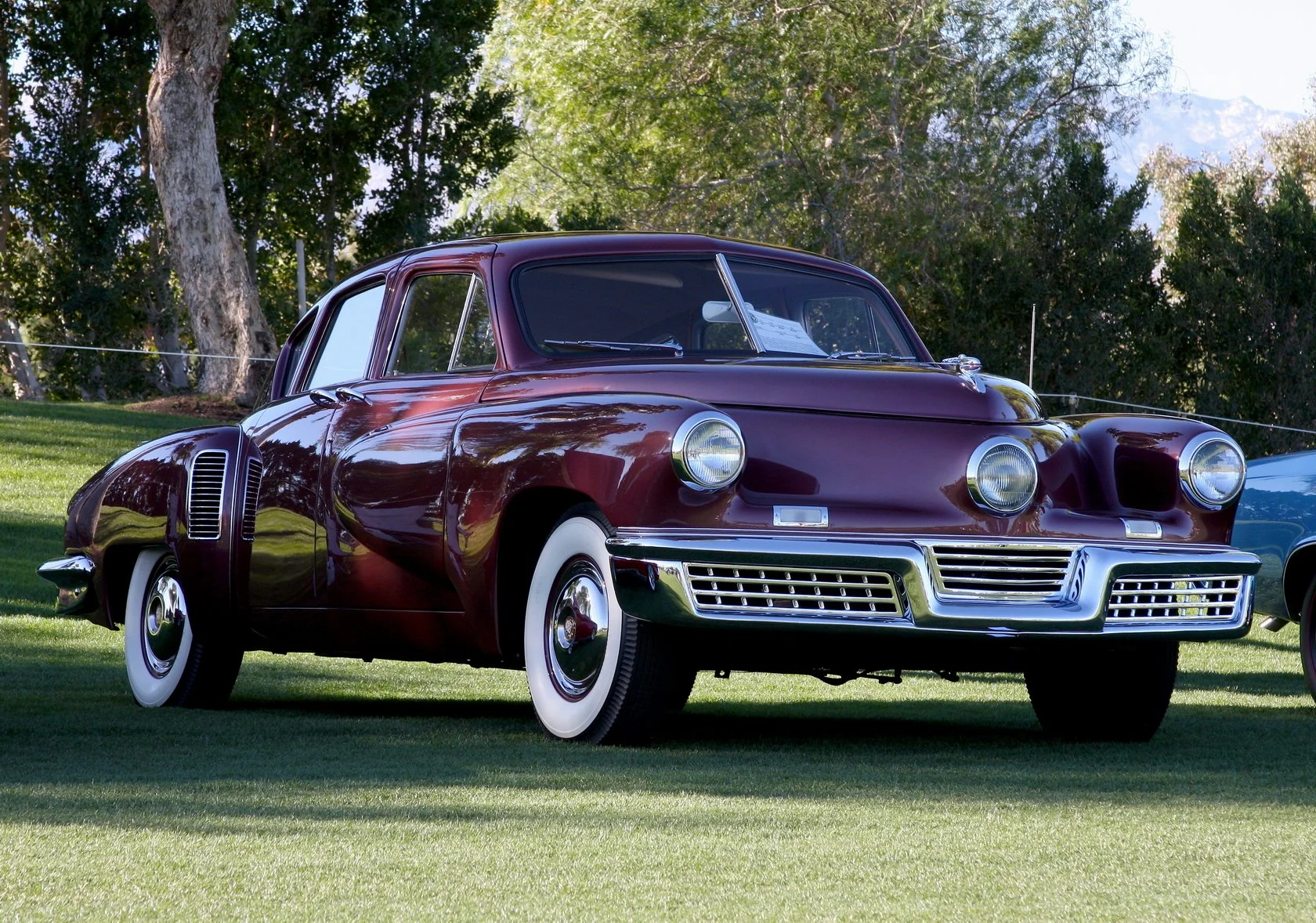The Tucker 48: An Influential Flop
A revolutionary idea alone isn’t a guarantee of success. Often, the success of an idea may have little to do with its merit. Good ideas flop for a number of reasons; lack of funding and poor business decisions are common culprits. Sometimes though, a good idea may just come along a bit too early for the public to accept it. The Tucker 48 was a car full of great ideas that flopped massively for all those reasons and more. Although the car was a major business failure, it introduced a number of innovative safety features that were decades ahead of their time and has since become known as one of the most influential vehicles ever made.
The Tucker Corporation was the brainchild of Preston Tucker, an eccentric businessman from Detroit. From an early age he developed a fascination with automobiles, and by his teens was buying up broken cars to fix and tinker with. As an adult, Tucker briefly worked as a car salesman before beginning an entrepreneurial streak. He owned a number of short-lived ventures, including a race team, aircraft company, and even designed an armored combat car with a portable turret for the army. Although none of these businesses were successful, he was undeterred, and finally after WWII he decided to start his own automobile company.
The war effort had taken resources away from the car industry and as a result the Big Three automakers had not come out with a new design since 1941. Consumers were itching for something fresh, and this left a large hole in the market for a new, smaller company to fill with a modern and innovative car. Tucker’s goal was to bring a car to market that focused heavily on safety, while also featuring sleek and modern styling. Safety was usually an afterthought for most car makers at the time, so focusing on designing a safe car from the ground up was a revolutionary idea. Tucker got together a small team of both newcomers and industry veterans, and soon they had a design for the first Tucker automobile, the Tucker 48.
The Tucker 48, named after the year of its introduction, featured numerous safety firsts. It was the first car to have a padded dashboard, something that wouldn’t become industry standard for another two decades. The passenger compartment was reinforced for side impact and had a built-in roll bar for roll-over accidents. It featured a shatterproof windshield that popped out for easy escape after a crash. The car also had a third headlight that was mounted in the center and turned with the car for more visibility around corners. One of the more unconventional features was a padded alcove under the dash that a passenger could take cover in during an accident. Though brand new or rare in 1948, most of these features would be adopted as essential to vehicle safety in the years to come.
Outside of safety, the Tucker 48 also had other innovative design elements that set it apart from other vehicles of the time. The suspension was a fully independent design, and instead of springs used rubber for shock absorption. Though it went through various redesigns over the car’s development, the final iteration used a rubber torsion beam system. The car also was designed to use the Tuckermatic transmission, which was one of the first CVT (Continuously Variable) type transmissions in a production car. Unfortunately, the Tuckermatic was only installed in 2 of the 51 cars produced, but it was far ahead of its time, as CVT transmissions were not heavily utilized in cars until the 1990’s, and are now the most common type of automatic transmission used in new cars.
Although the Tucker 48 featured beautiful modern styling and numerous industry firsts, the launch was plagued with issues and the car was never able to fully move into production. At a press conference to unveil the first prototype, the car’s suspension broke under its own weight, giving the car a poor reputation for reliability before the design was even finalized. The original engine and transmission had numerous issues and powertrains were swapped multiple times over its production run. Just as the public was warming up to the car, the company was indicted on fraud charges by the SEC. Although the charges were all eventually dropped after a lengthy investigation, the negative publicity was the final nail in the coffin for the company, and production ended after they had produced only 51 cars.
Though auto makers had started to incorporate some safety features by the 1940’s, Tucker was the first to try and design a safe car from the start. Though it was a commercial failure, the safety features found in the Tucker 48 were highly revolutionary and decades ahead of their time. By showing people the importance of safety, Tucker changed the way automakers design cars, and in the process has surely saved countless lives.
